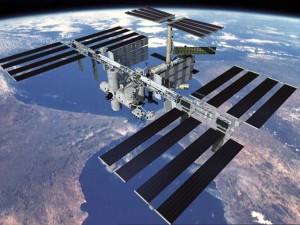We are not ready to go to mars. Could we be ready by 2030? Yes. Should we have been ready years ago? Yes. But are we? No. Why? Three words: “one way trip.”
[extoc] There seem to be two main camps regarding the proposal for a manned mission to mars. One camp is that we should definitely go and the other is that there is no point. I am in a different camp. We really should be going to Mars, and I really hope that we are ready at some point in the near future.
There seem to be two main camps regarding the proposal for a manned mission to mars. One camp is that we should definitely go and the other is that there is no point. I am in a different camp. We really should be going to Mars, and I really hope that we are ready at some point in the near future.
However, the idea that such a mission would likely be a one way mission shows that we are not yet ready. This is because there is absolutely no reason why it has to be a one way trip. It is not like a deep space mission where the laws of physics block us from being able to make a return trip in the span of a human lifetime. We just lack the infrastructure.
Being Ready
So if we aren’t ready, how can we prepare to send people on a mission to Mars? As I mentioned, the problem is a matter of lack of infrastructure. Therefore, we need to build the infrastructure. This would include building a space station, either around the Earth or the moon which is capable of building ships on site. We would then have to build another station in Mars’ orbit. Only then could we easily move back and forth between Earth and Mars: a trip which only takes 150 – 300 days, depending on speed.
Cost
Unfortunately without building a full plan of action, it is incredibly difficult to get a figure on the total cost, but it is amazing how close you can get by making a large number of guesses. One thing is for certain, it wouldn’t be cheap. As of 2010, the ISS had cost a total of about $150 billion, but the ISS is not equipped to handle construction of ships. Taking this into account, a rough guess for the construction of one space station would be somewhere in the $300 billion range.
We then have a problem of where to get the source material for construction. The answer to that is “simple”: the moon. There are plenty of raw materials on the moon, and it would cost a fraction of the amount to pull ore from the moon and ship it to a space station rather than going back and forth between the Earth and the moon. Figure that the mining operation would cost about $100B to establish. To make writing a bit easier, I will refer to the Earth/moon station as the Alpha station and the Mars station as the Beta station.
With the ability to produce modules for the Beta station, in space, we could then easily—relatively speaking—send them to Mars so that we can build a similar station. Once enough of the Mars station is built, the rest of the material can be mined from Mars, one of Mars’ moons, or possibly the asteroid belt. This station and mining system is likely to cost more than the Alpha station because a lot of the material for it would have to be shipped from the Alpha mining plant. As a rough guess, let’s say this would cost $700B.
So a very rough guess puts us at around $1.1T Of course, no project stays in budget, so let’s just double that to be in the safe side. We then have a total rough cost of $2.2T This seems like a very large sum of money, and it is, but let’s put that into perspective. The United States spends roughly $800B a year on “defense” spending. So the total estimated cost is only about three years worth of “defense” spending. Of course, I do not suggest that we increase government spending to push this project along, but using government spending for colonizing space rather than killing each other, is better than the status quo.

